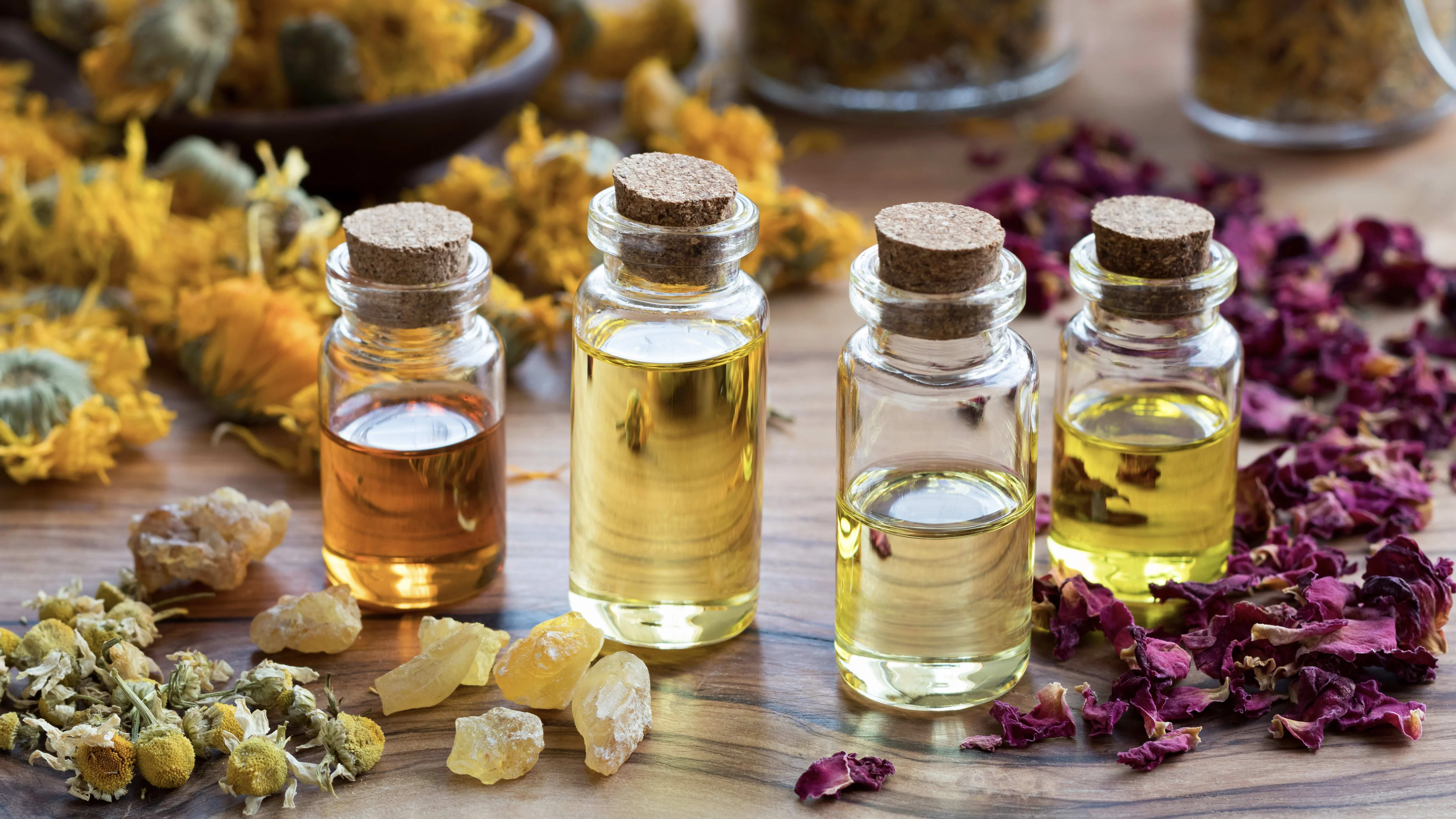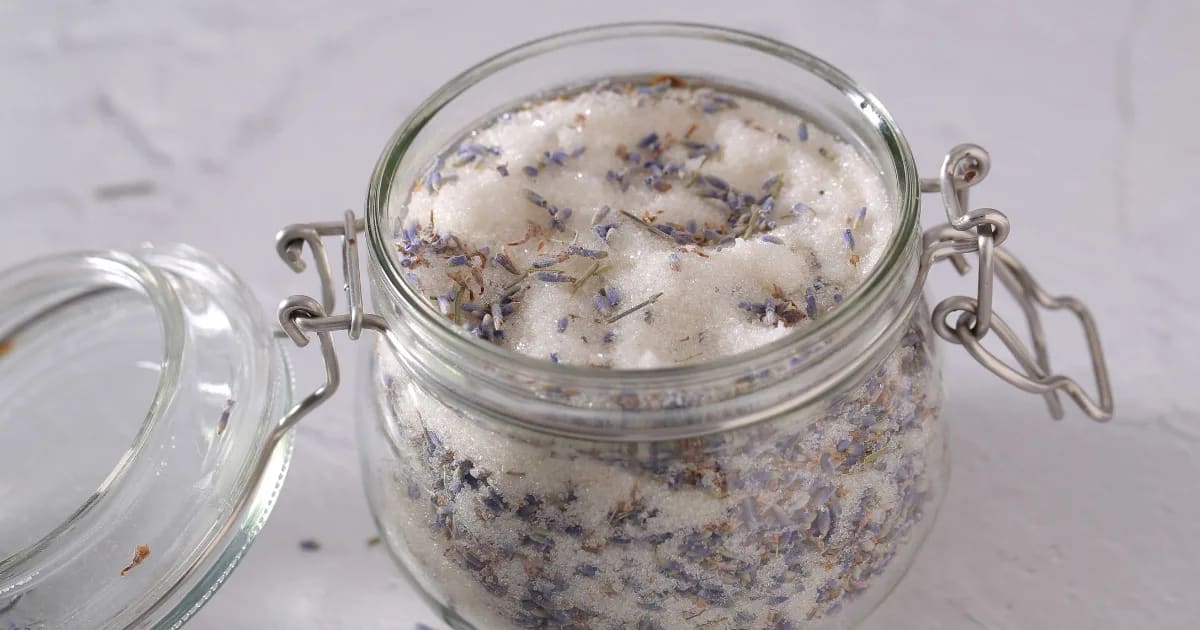Essential Oils for Pain: 5 That Work & How to Use Them

Essential Oils for Pain Relief: Naturally Effective!
Pain comes to us in different ways. Some pain is short-term and acute, caused by an injury, while other pain can become a chronic issue that can have a serious impact on your quality of life.
Since there are different kinds of pain, it’s good that essential oils for pain can help in a variety of ways.
Most essential oils for pain work by calming inflammation. But different oils contain different chemical components, so not every oil calms inflammation in the same way. For example, the components in peppermint oil work a little differently from those in ginger.
There are far too many essential oils for pain to share in a single blog post, so we’ve narrowed the list down to five of our favorite essential oils for pain relief. These five are also especially well-researched. You’ll learn how these oils work to calm inflammation and get ideas for using them safely. This short—yet reliable—list of essential oils for pain can help you create your own affordable, natural care kit.
Now let’s talk about ginger!
Ginger (Zingiber officinale)
Ginger has been trusted for pain relief for centuries. Modern studies have confirmed its traditional uses, even comparing its properties to those of non-steroidal anti-inflammatory drugs (NSAIDS), like Advil and other common pain relievers. As researchers, Grzanna (et al.) wrote:
The original discovery of ginger’s inhibitory effects on prostaglandin biosynthesis in the early 1970s has been repeatedly confirmed. This discovery identified ginger as an herbal medicinal product that shares pharmacological properties with non-steroidal anti-inflammatory drugs.
Substances that inhibit prostaglandin synthesis are often used to reduce inflammatory enzymes in the body. In ginger’s case, it works by inhibiting three of these enzymes: COX-1, COX-2, and 5-LOX. This is super impressive! Some oils, like thyme (Thymus vulgaris ct. thymol) have been shown to reduce one of these enzymes (in thyme’s case, it’s COX-2), but not every oil inhibits THREE inflammatory enzymes!
How to use ginger essential oil for pain relief
Ginger is a warming oil—it can increase circulation in the area where it’s applied. It’s especially helpful when it’s used for “cold” pain, like joints that act up in cold weather. Apply it topically (well diluted, as it’s a spicy oil that can potentially irritate the skin), or inhale it.
Try ginger for:
Achy joints
Respiratory support
Sore muscles
Swelling
Make a Ginger Recipe for Pain Relief!
Lavender (Lavandula angustifolia)
Lavender is one of the most versatile, reliable essential oils for pain! A lot of research has been done on lavender, along with its main components, linalool and linalyl acetate. Researchers Peana (et al.) found that
“. . . linalool and linalyl acetate-producing species are potentially anti-inflammatory agents.”
That’s amazing! But what types of inflammation do these components calm?
Author Salvatore Battaglia has some insight for us. In The Complete Guide to Aromatherapy (Third Edition) Vol 1, he shares that lavender can soothe headaches, menstrual pain, muscle spasms, and even respiratory issues (it reduced asthma issues in mice). But lavender is especially well-known for skin care and wounds:
A study demonstrated that topical application of lavender oil . . . has the potential to promote wound healing in the early phase by the acceleration of formation of granulation tissue, tissue remodeling by collagen replacement and wound contraction . . .
In everyday terms, that means that lavender helped repair skin damage and heal wounds. Lavender has even been shown to reduce the need for opiates after surgery.
How to use lavender essential oil for pain relief
Lavender is strong enough to work for adults but gentle enough for children. You can inhale it or apply it topically (safely diluted in a carrier).
Try lavender for:
Achy joints
Bites or stings
Bruises
Headaches
Minor burns
Respiratory support
Skin irritation
Small cuts or scrapes
Sore muscles
Swelling
Lemon (Citrus limon)
Multiple studies have shown that citrus oils, and their main component (d-limonene), can calm inflammation. (d-Limonene is present in ALL citrus oils—lemon, orange, grapefruit, and more.) A 2016 study (done with mice) concluded that lemon:
. . . exhibited anti-inflammatory effects by reducing cell migration, cytokine production, and protein extravasation . . . These effects were also obtained with similar amounts of pure limonene.
That means that the citrus oil and pure limonene were both tested, and both calmed the inflammatory response in several ways.
Other studies have shown that limonene’s effects go even further, making it helpful for inflammation in the respiratory system.
How to use lemon essential oil for pain relief
Lemon is a phototoxic essential oil, which means it can cause negative reactions in sunlight. You can use phototoxic oils safely if you dilute them in a carrier—however, each phototoxic oil has a different safe drop count. For lemon, use 12 drops or less for every 1 fl oz (30 ml) of the carrier. That said, lemon works well when inhaled, too!
Try lemon for:
Achy joints
Headaches
Respiratory support
Sore muscles
Swelling
Myrrh (Commiphora myrrha)
Myrrh has been used in traditional Chinese medicine, Ayurveda, and indigenous healing systems for a long list of complaints: arthritis, wounds, fractures, blood stagnation, and more.
But does it really work?
Author Salvatore Battaglia (The Complete Guide to Aromatherapy (Third Edition) Vol I) says that myrrh has been shown to inhibit inflammatory mediators—substances produced by the body that promote the inflammatory response—such as interleukin 6 and nitric oxide. Myrrh has demonstrated results like this alone and also when combined with another resinous oil, frankincense:
Another study confirmed the efficacy of frankincense and myrrh in the treatment of inflammatory diseases . . . The researchers concluded that administration of combined frankincense and myrrh suppressed arthritic progression in rats more effectively than single drug treatment.
How to use myrrh essential oil for pain relief
Like other oils distilled from resins, myrrh is perfect for inhalation and skin application. It’s very skin-loving and can soothe irritation like a charm.
Try myrrh for:
Achy joints
Bites or stings
Headaches
Respiratory support
Skin irritation
Small cuts or scrapes
Sore muscles
Swelling
Peppermint (Mentha × piperita)
We mentioned using ginger essential oil for pain that feels cool. Well, peppermint is the oil for painful areas that feel warm! Peppermint’s cooling touch is super-soothing, and it’s all thanks to its primary component: menthol.
Menthol’s cooling effect is actually what makes it so powerful for pain relief. Menthol isn’t a cold component in and of itself, but it feels cool because it activates a protein in cold-sensing nerves called “TRPM8.” This has the effect of gently numbing the area (similar to an ice pack) and desensitizing pain receptors
In a 2014 study, researchers concluded that menthol:
. . . Effectively attenuated pain behavior in all models of acute . . . and inflammatory pain examined in this study. These analgesic effects were completely abolished in TRPM8-deficient mice.
That means that mice without TRPM8 didn’t experience pain relief. So TRPM8 is the main way that menthol works to calm the pain.
How to use peppermint essential oil for pain relief
Because peppermint works best by activating cold-sensing nerves, it’s helpful to apply it to the painful area. Make sure the skin isn’t broken. But make sure to dilute your peppermint oil! Low concentrations of menthol have a comforting, cooling effect. High concentrations, however, are completely opposite: they feel hot and irritating.
You can also inhale it, which is especially soothing for the head and respiratory system.
Try peppermint for:
Achy joints
Headaches
Respiratory support
Sore muscles
Swelling
Develop a Natural Lifestyle with Essential Oils!
Knowing how to use essential oils for pain is a relief in more ways than one. Easing your family’s discomfort is empowering, but there’s also the fact that you’re able to do it naturally.
Now you can learn even more ways to care for your family with oils!
In one of our most popular classes, Aromatherapy for Natural Living, you’ll discover how to replace toxic cleaners with natural versions (and why that’s so important), make your own bath & body products, keep kids healthy with oils, and more—all with basic tools found in most household kitchens!
REFERENCES
Amorim JL, Simas DL, Pinheiro MM, Moreno DS, Alviano CS, da Silva AJ, Fernandes PD. Anti-Inflammatory Properties and Chemical Characterization of the Essential Oils of Four Citrus Species. PLoS One. 2016 Apr 18;11(4):e0153643. doi: 10.1371/journal.pone.0153643. PMID: 27088973; PMCID: PMC4835072.
Battaglia, S. (2019) The Complete Guide to Aromatherapy (Third Edition) Vol I: Foundations & Materia Medica. Zillmere, QLD, Australia. Black Pepper Creative Party, Ltd
Davies, S.J., Harding, L.M. and Baranowski A.P. (2002) A novel treatment for postherpetic neuralgia using peppermint oil. Clinical Journal of Pain 18, 200-202.
de Cássia da Silveira E Sá, R., Lima, T. C., da Nóbrega, F. R., de Brito, A., & de Sousa, D. P. (2017). Analgesic-Like Activity of Essential Oil Constituents: An Update. International journal of molecular sciences, 18(12), 2392. https://doi.org/10.3390/ijms18122392
Gebrehiwot, M., Asres, K., Bisrat, D., Mazumder, A., Lindemann, P., & Bucar, F. (2016). Effects of Resin and Essential Oil from Commiphora myrrha Engl. on Wound Healing. Ethiopian Pharmaceutical Journal, 32(2), 85-100.
Gobel, H., Schmidt, G. and Soyka, D. (1994) Effect of peppermint and eucalyptus oil preparations on neurophysiological and experimental algesimetric headache parameters. Cephalagia: an international journal of headache 14, 228-234.
Grzanna R, Lindmark L, Frondoza CG. Ginger--an herbal medicinal product with broad anti-inflammatory actions. Journal of Medicinal Food. 2005 Summer;8(2):125-32. doi: 10.1089/jmf.2005.8.125. PMID: 16117603.
Guimarães, A.G., Quintans, J.S.S. and Quintans-Júnior, L.J. (2013) Monoterpenes with analgesic activity – a systematic review. Phytotherapy Research 27, 1-15.
Kim JT, Ren CJ, Fielding GA, Pitti A, Kasumi T, Wajda M, Lebovits A, Bekker A. Treatment with lavender aromatherapy in the post-anesthesia care unit reduces opioid requirements of morbidly obese patients undergoing laparoscopic adjustable gastric banding. Obesity Surgery. 2007 Jul;17(7):920-5. doi: 10.1007/s11695-007-9170-7. PMID: 17894152.
Liu, B., Fan, L., Balakrishna, S., Sui, A., Morris, J. B., & Jordt, S. E. (2013). TRPM8 is the principal mediator of menthol-induced analgesia of acute and inflammatory pain. Pain, 154(10), 2169–2177. https://doi.org/10.1016/j.pain.2013.06.04
McKemy DD. TRPM8: The Cold and Menthol Receptor. In: Liedtke WB, Heller S, editors. TRP Ion Channel Function in Sensory Transduction and Cellular Signaling Cascades. Boca Raton (FL): CRC Press/Taylor & Francis; 2007. Chapter 13. Available from: https://www.ncbi.nlm.nih.gov/books/NBK5238/
Peana, A.T., D’Aquila, P.S., Panin, F., Serra, G., Pippia, P. and Moretti, M.D. (2002) Anti-inflammatory activity of linalool and linalyl acetate constituents of essential oils. Phytomedicine 9, 721-726.
Pergolizzi Jr, J. V., Taylor Jr, R., LeQuang, J. A., Raffa, R. B., & NEMA Research Group. (2018). The role and mechanism of action of menthol in topical analgesic products. Journal of clinical pharmacy and therapeutics, 43(3), 313-319.
Rahmani, A.H. Al Shabrmi, F.M. and Aly, S.M. (2014) Active ingredients of ginger as potential candidates in the prevention and treatment of diseases via modulation of biological activities. International Journal of Physiology, Pathophysiology and Pharmacology 6, 2, 125-136.
Rivot, J. P., Montagne-Clavel, J. and Besson, J. M. (2002) Subcutaneous formalin and carrageenan increase nitric acid release as measured by in vivo voltammetry in the spinal cord. European Journal of Pain 6, 25-34
Shen, T., Li, G.H., Wang, X.N. and Lou, H.X. (2012) The genus Commiphora: a review of its traditional uses, phytochemistry and pharmacology. Journal of Ethnopharmacology 142, 2, 319-330.
Su, S., Wang, T., Duan, J.A., Zhou, W., Hua, Y.Q., Tang, Y.P., Yu, L. and Qian, D.W. (2011) Anti-inflammatory and analgesic activity of different extracts of Commiphora myrrha. Journal of Ethnopharmacology 134, 251-258.
Tang SK, Tse MY. Aromatherapy: does it help to relieve pain, depression, anxiety, and stress in community-dwelling older persons? Biomed Research International. 2014;2014:430195. doi: 10.1155/2014/430195. Epub 2014 Jul 13. PMID: 25114901; PMCID: PMC4119713.





